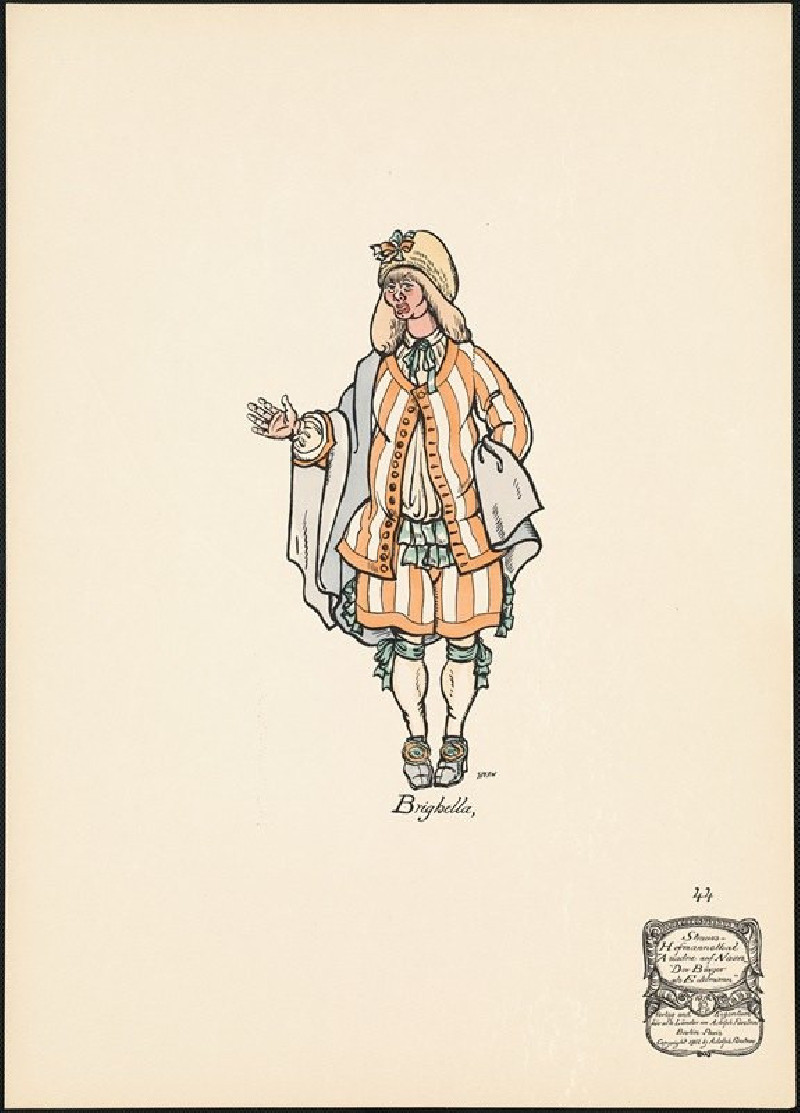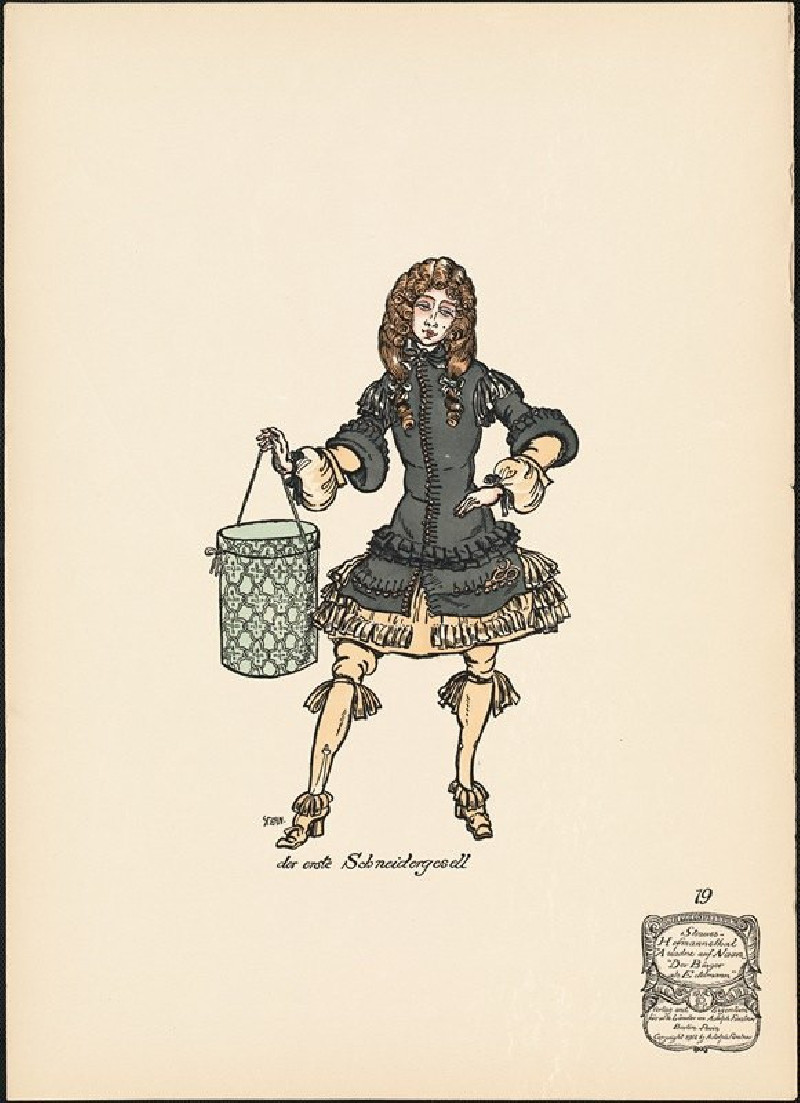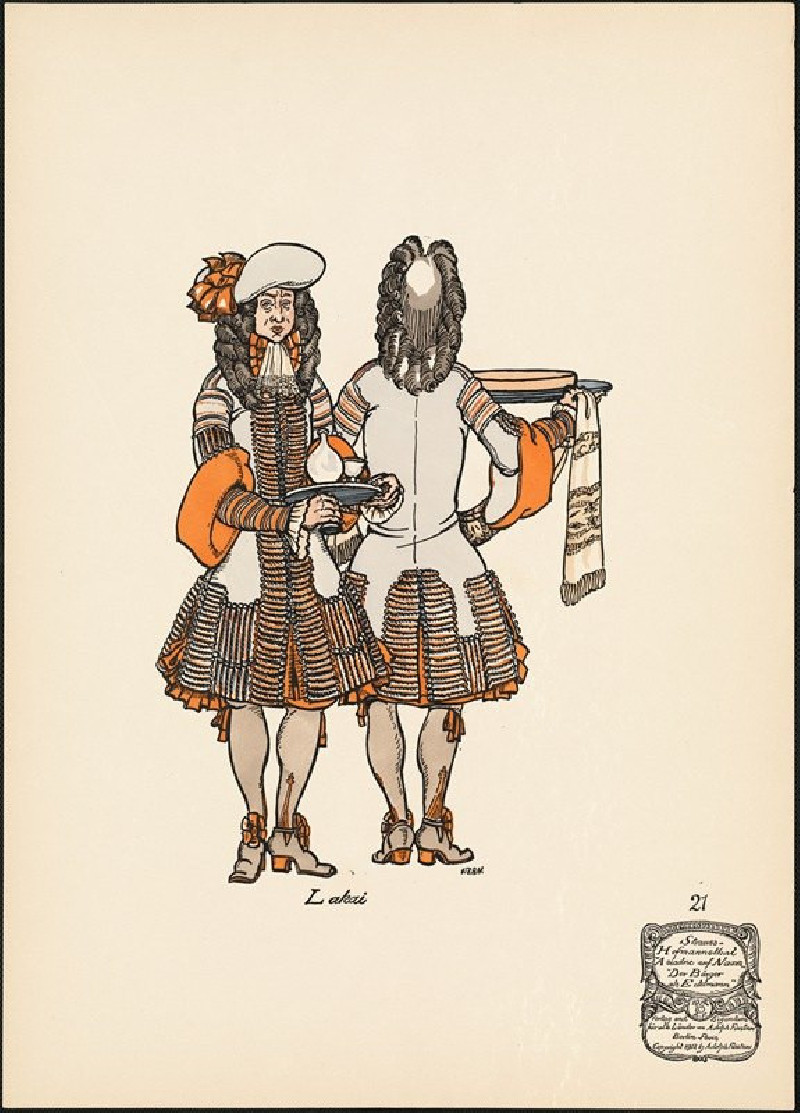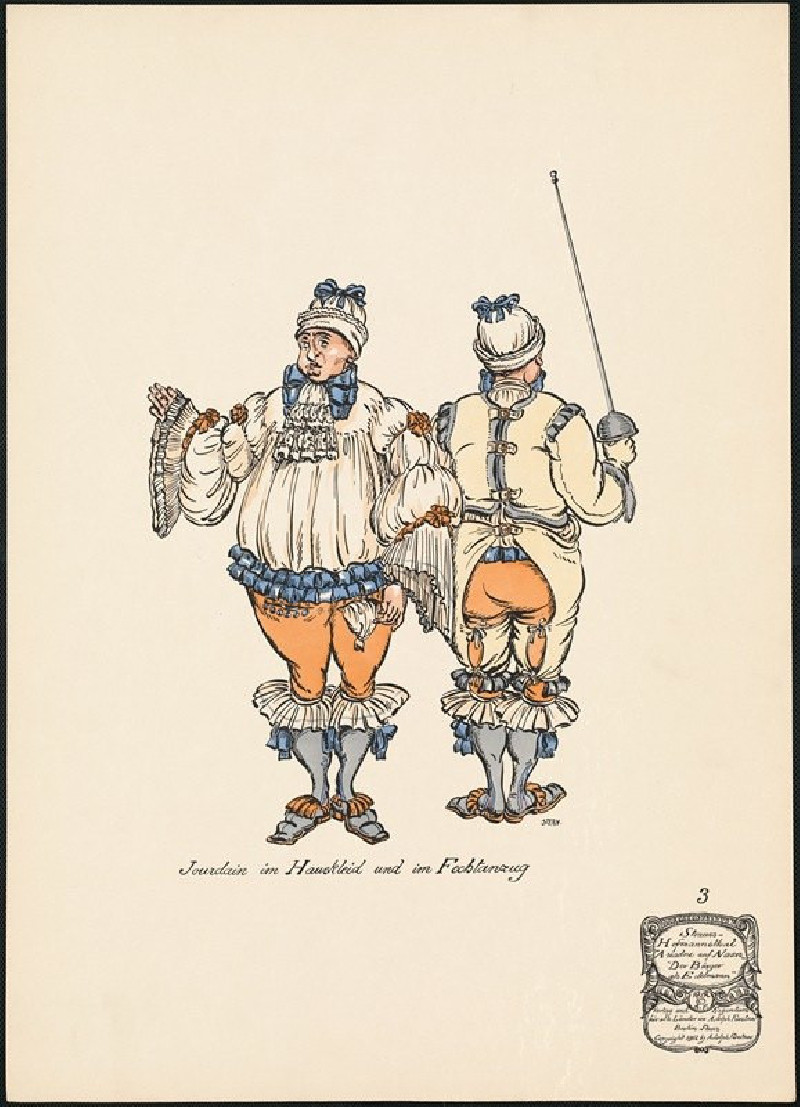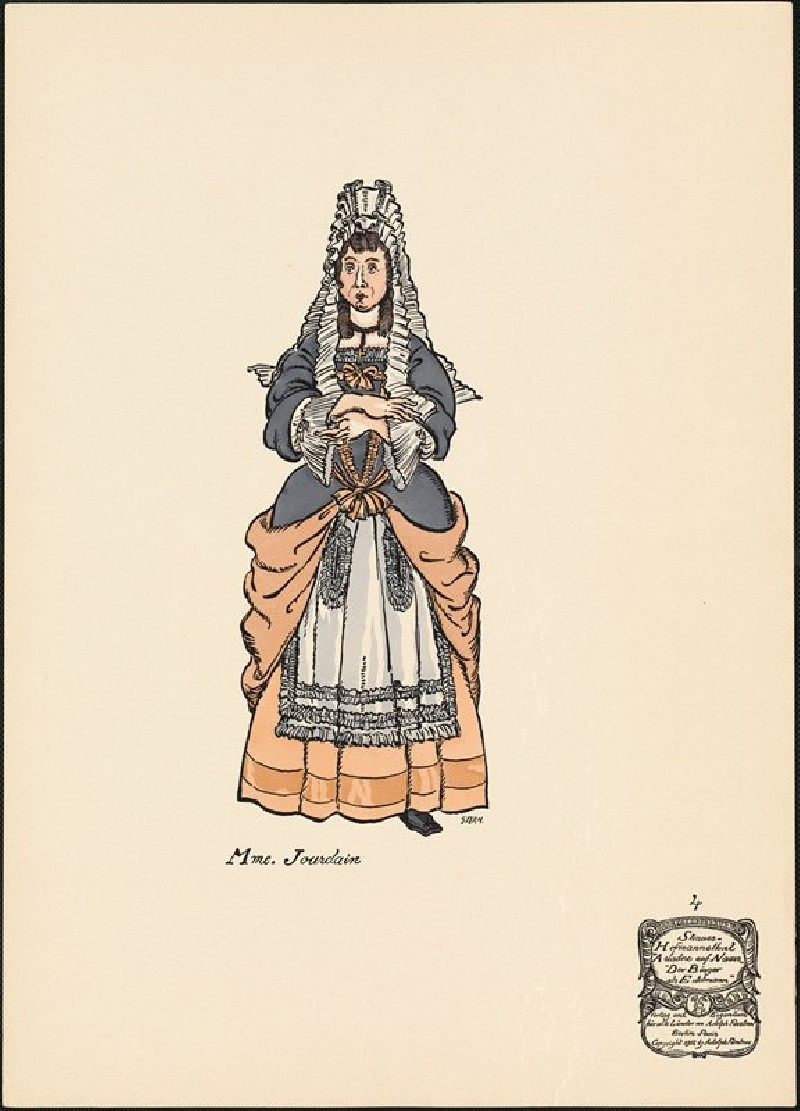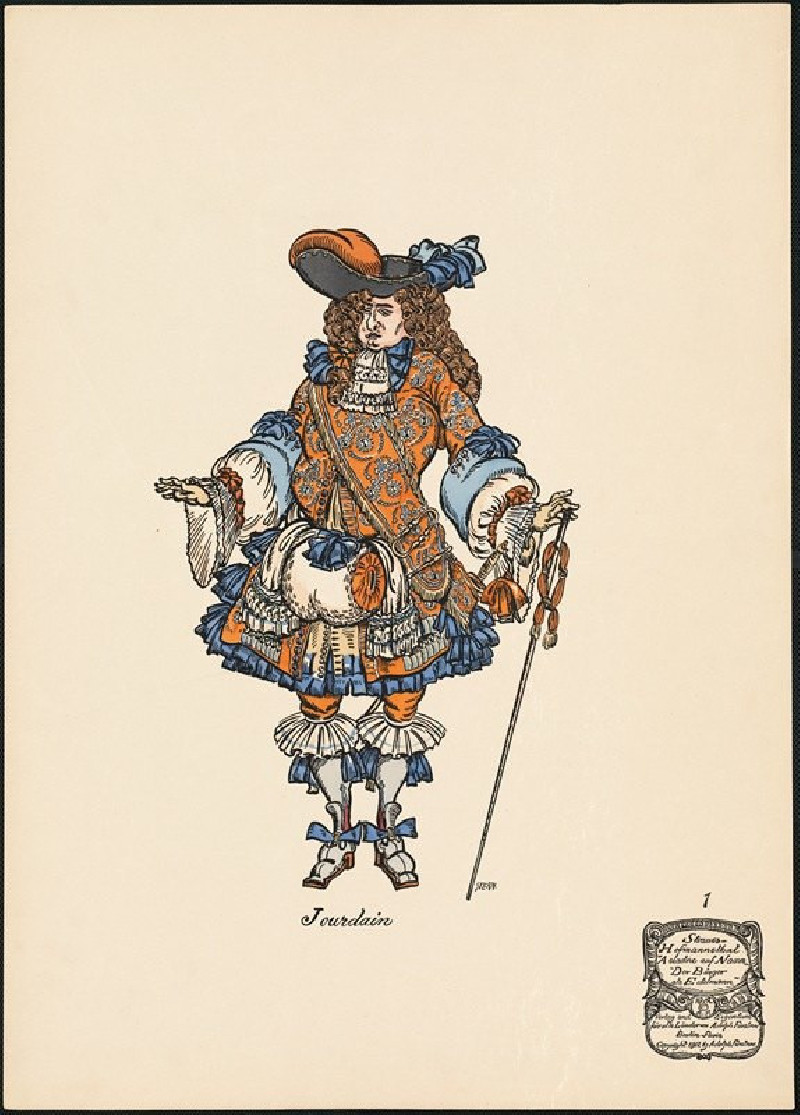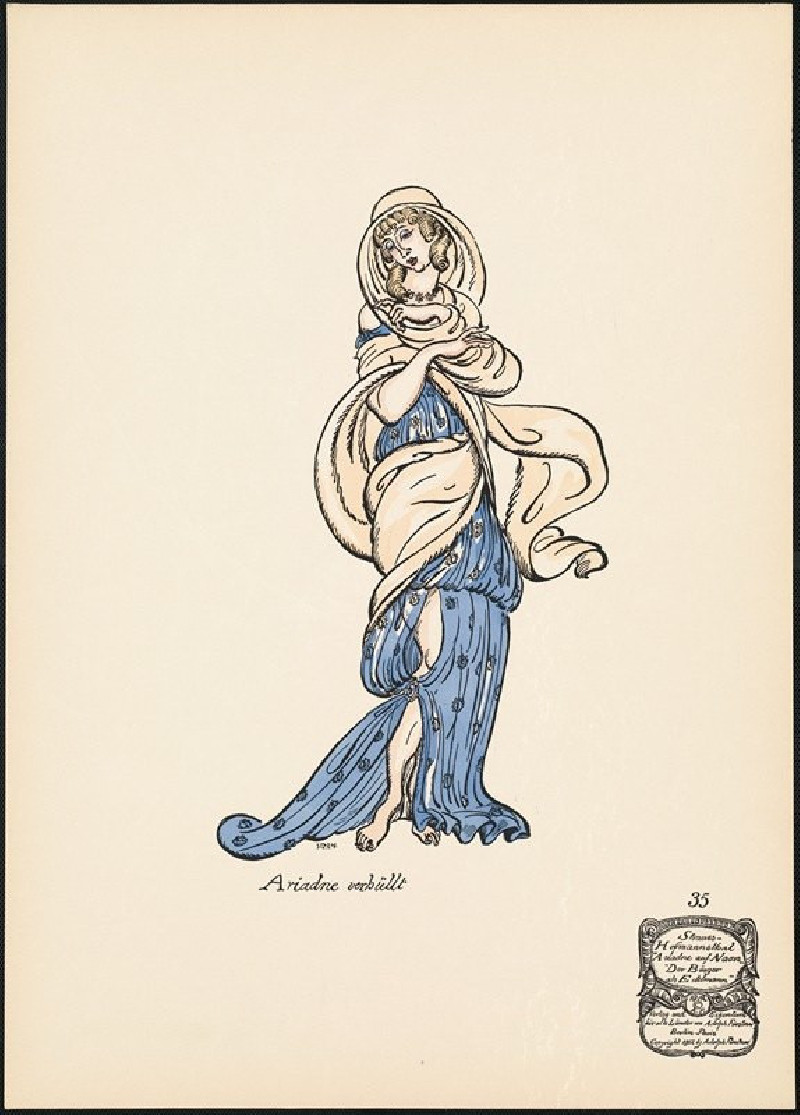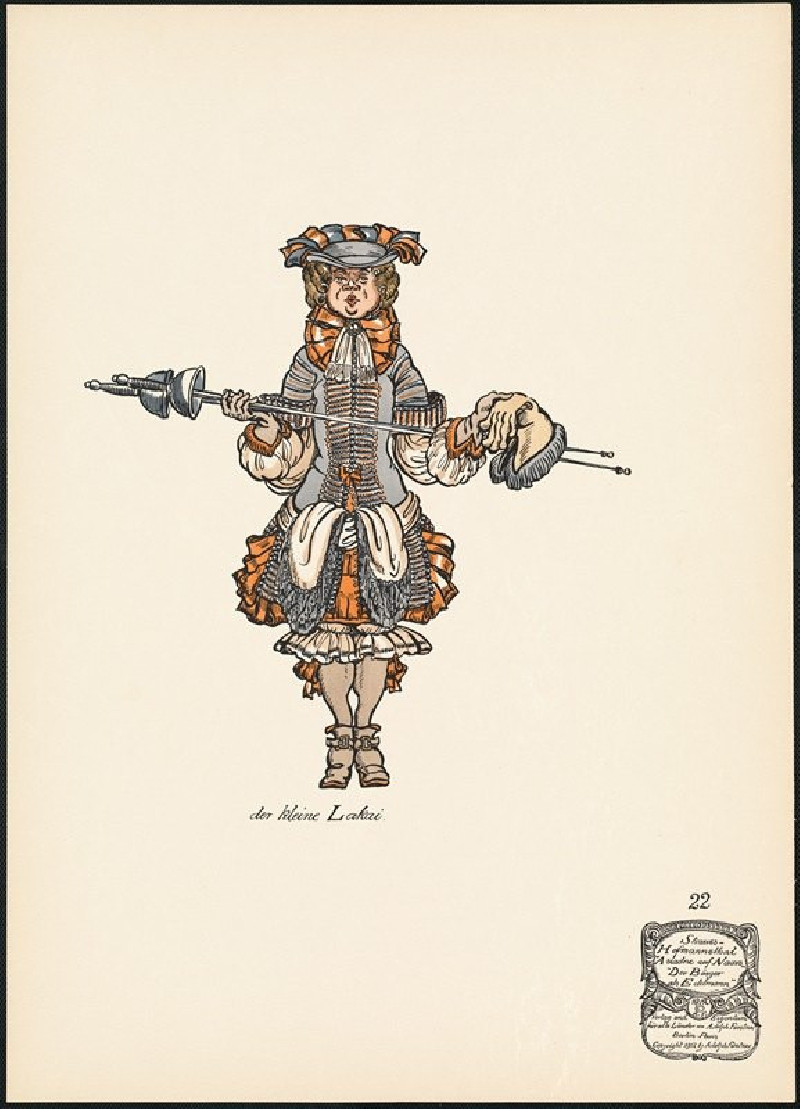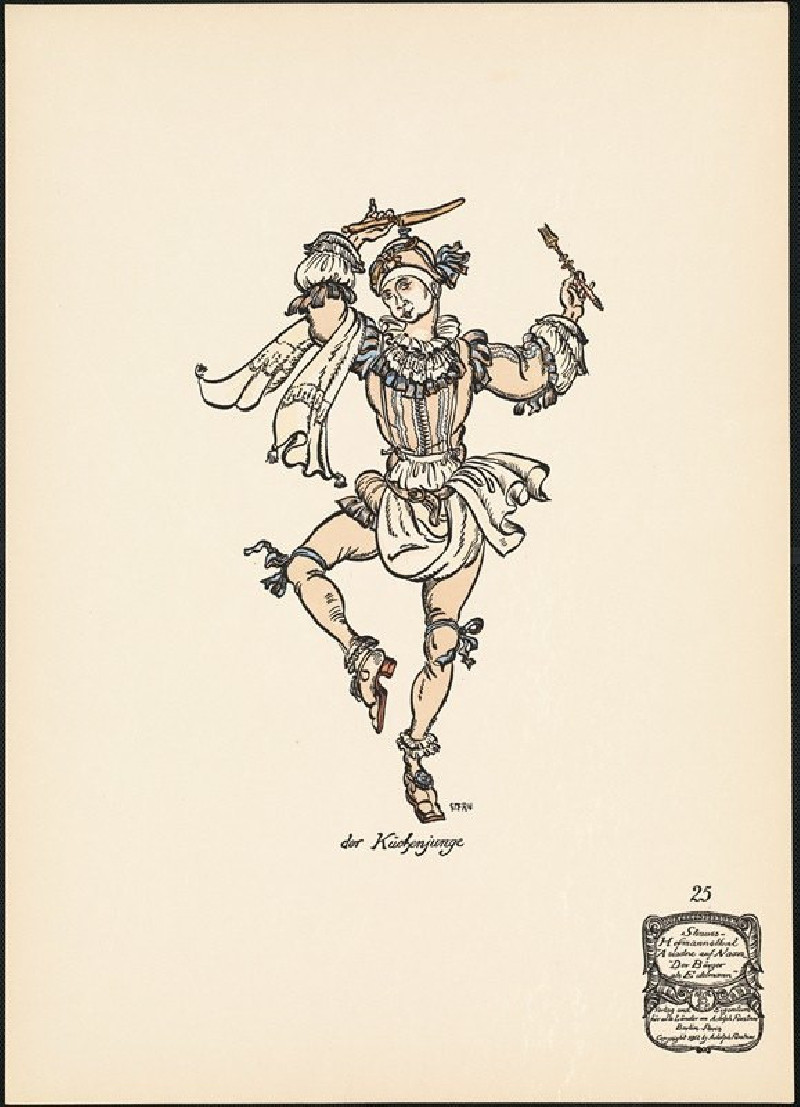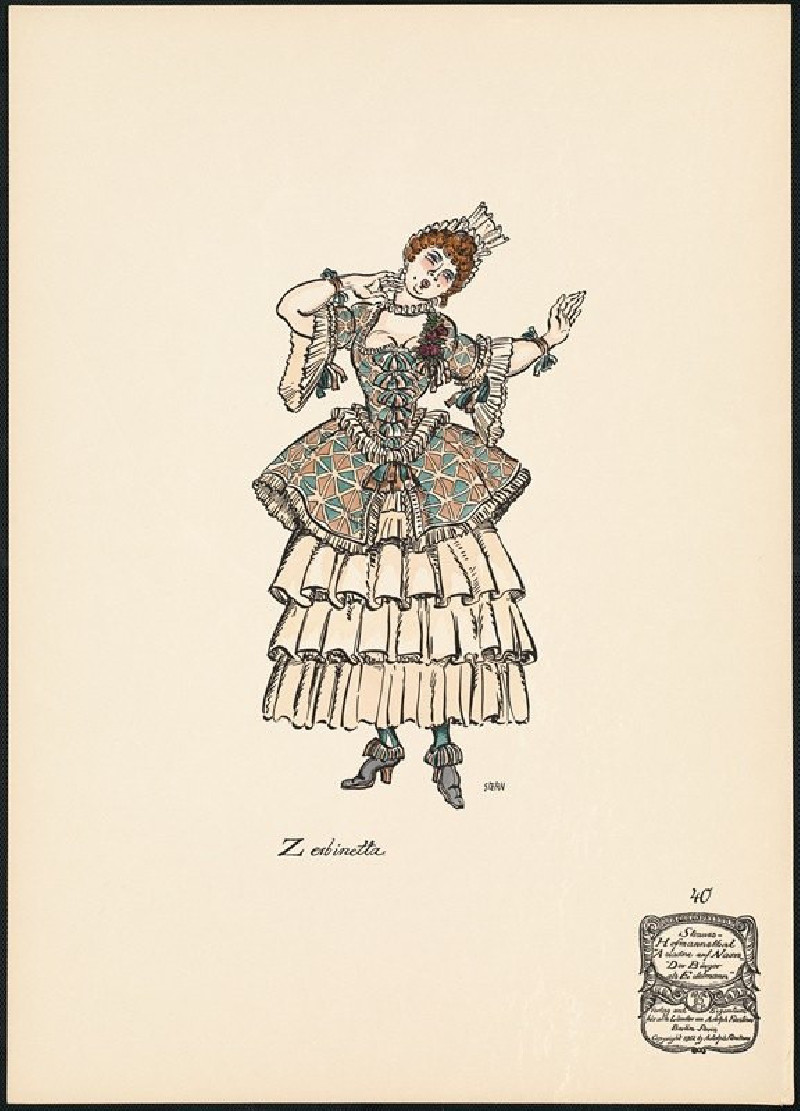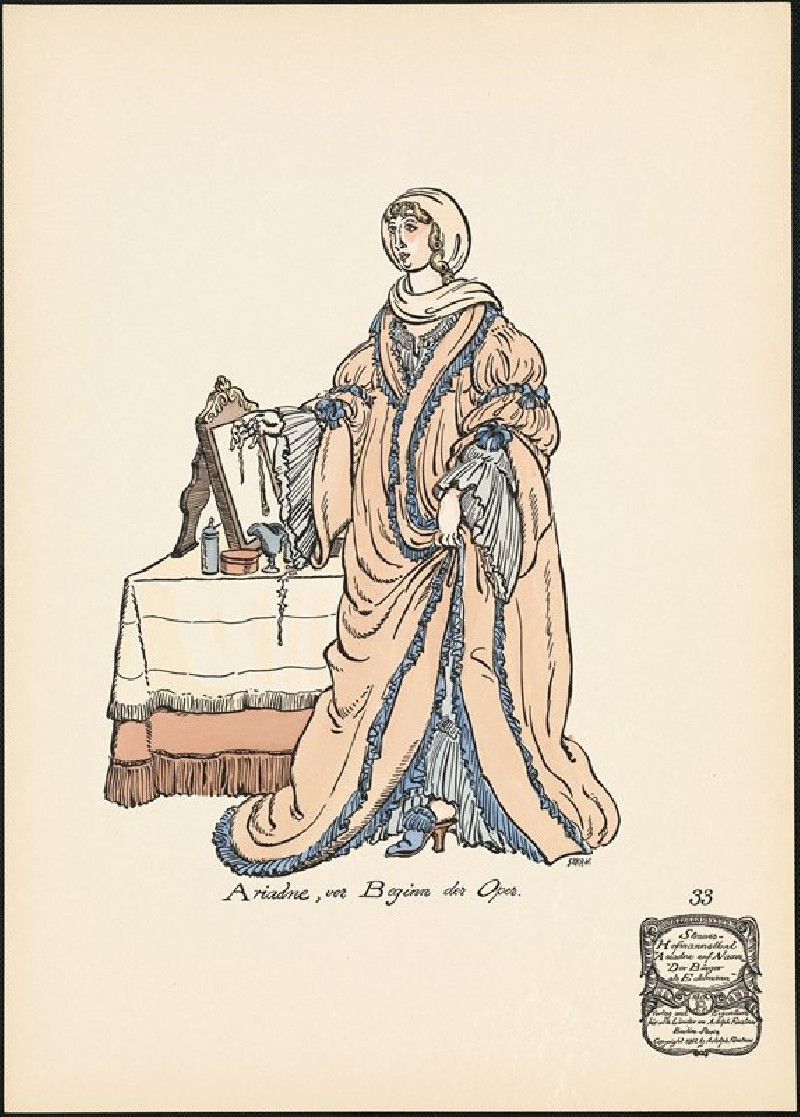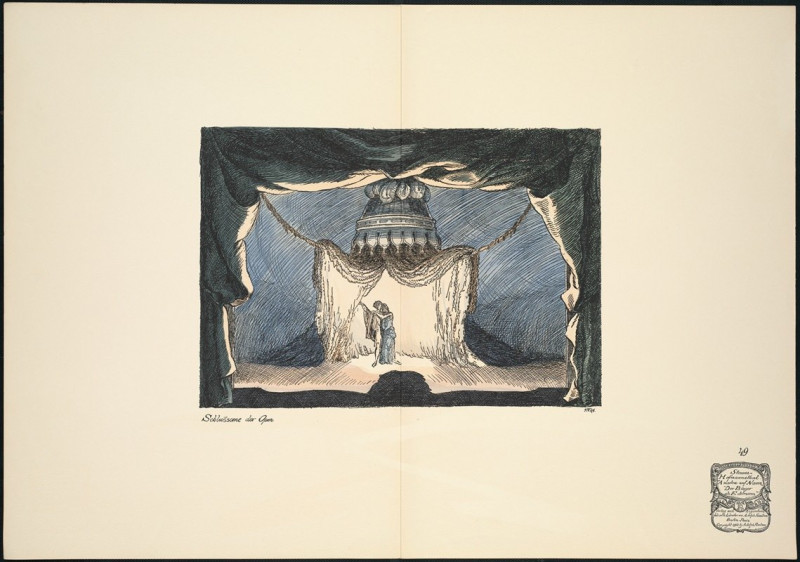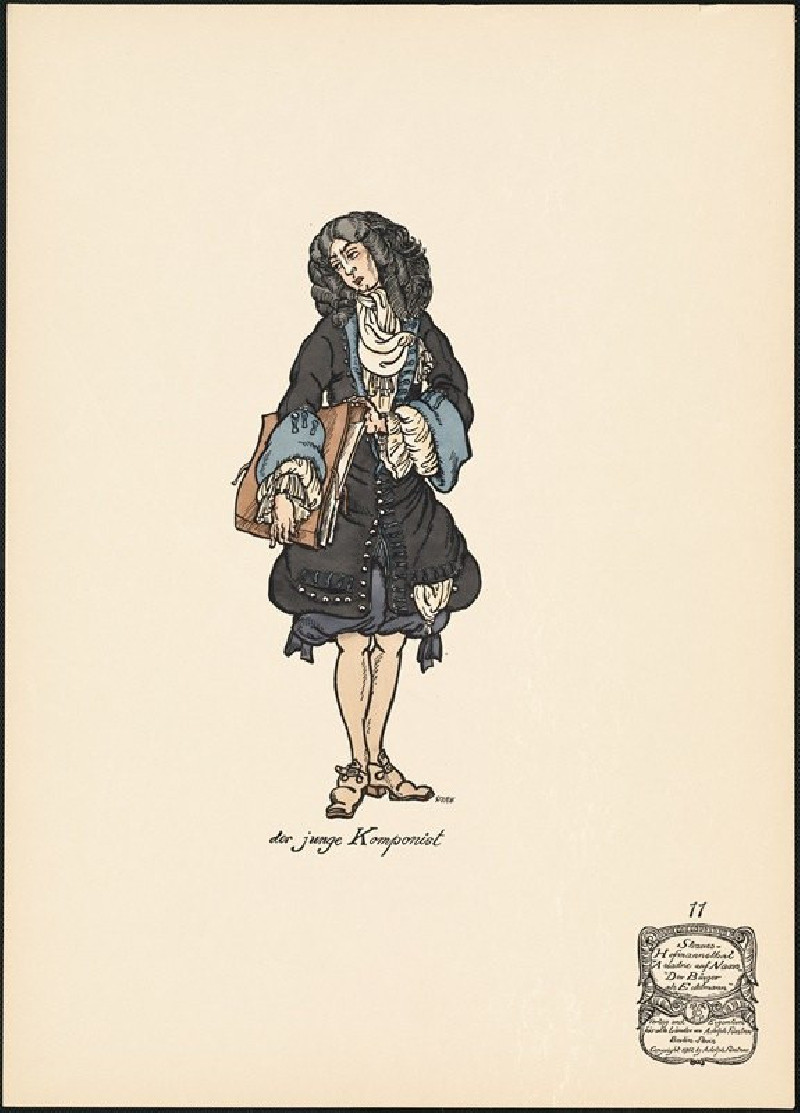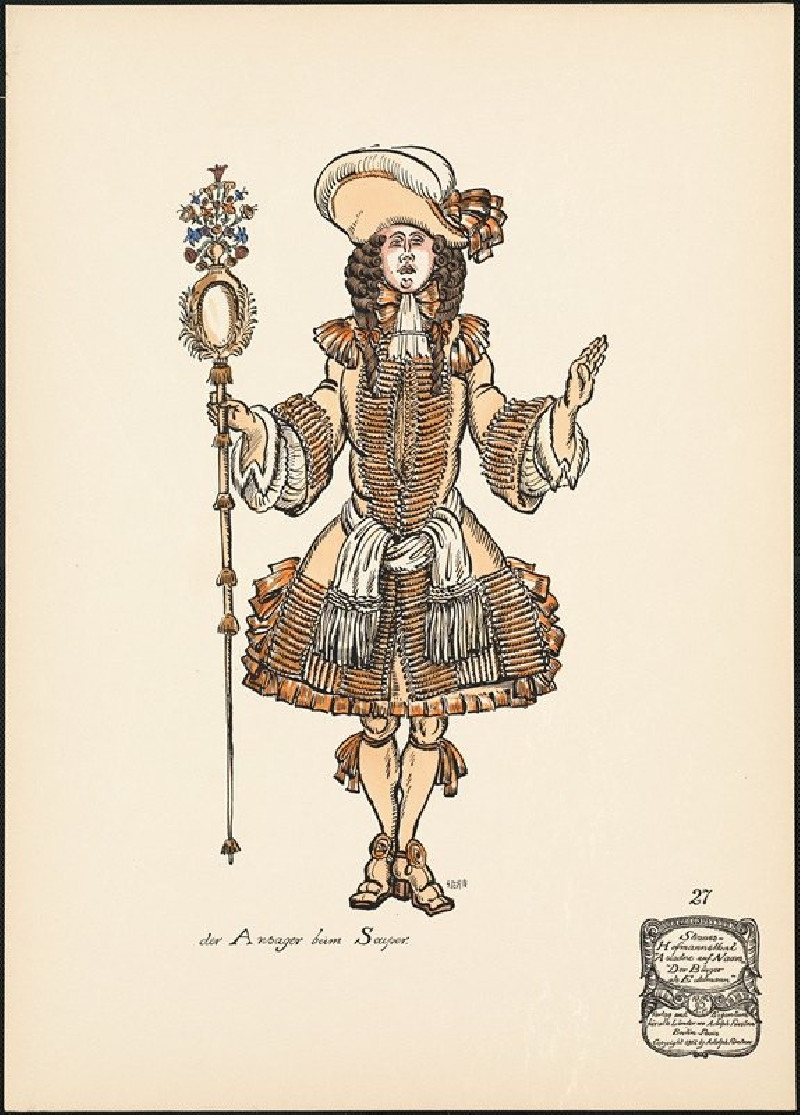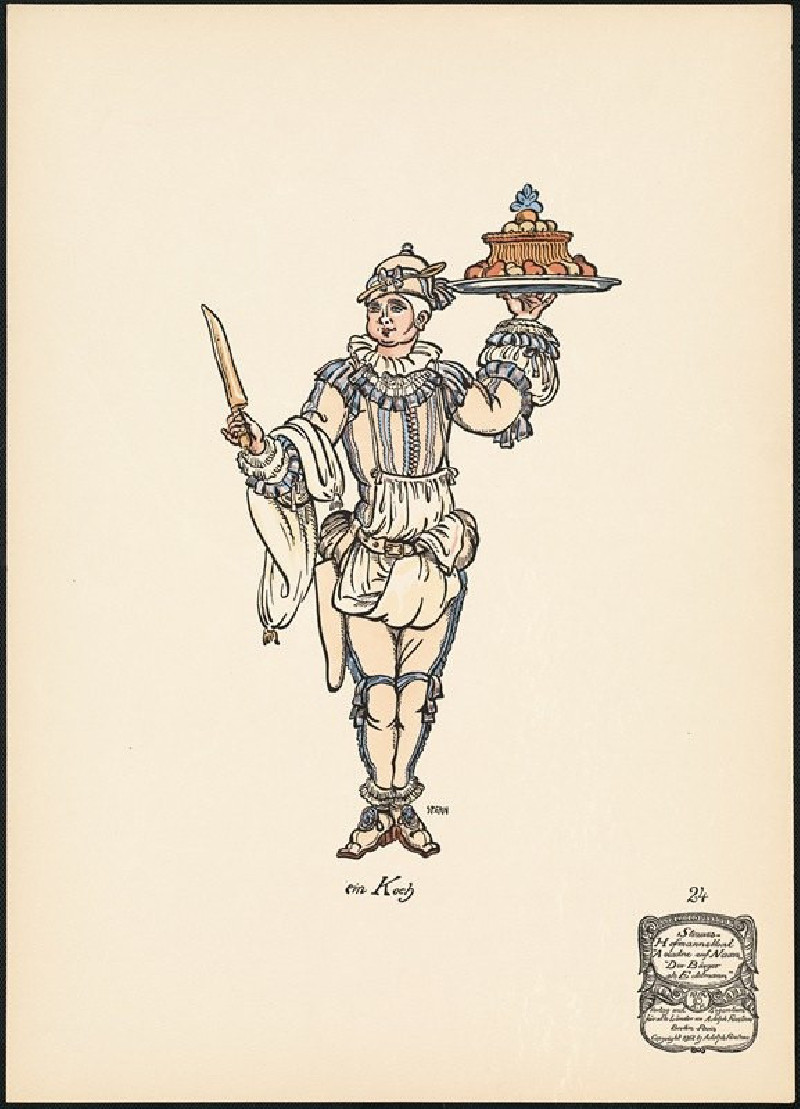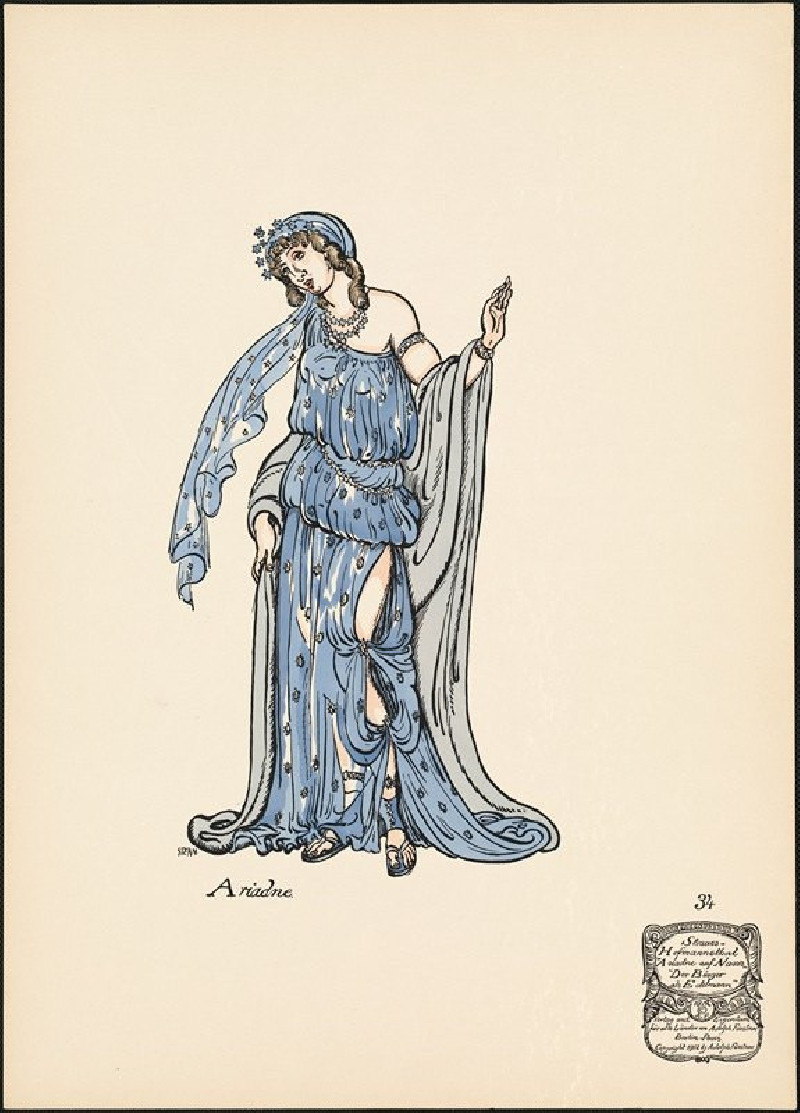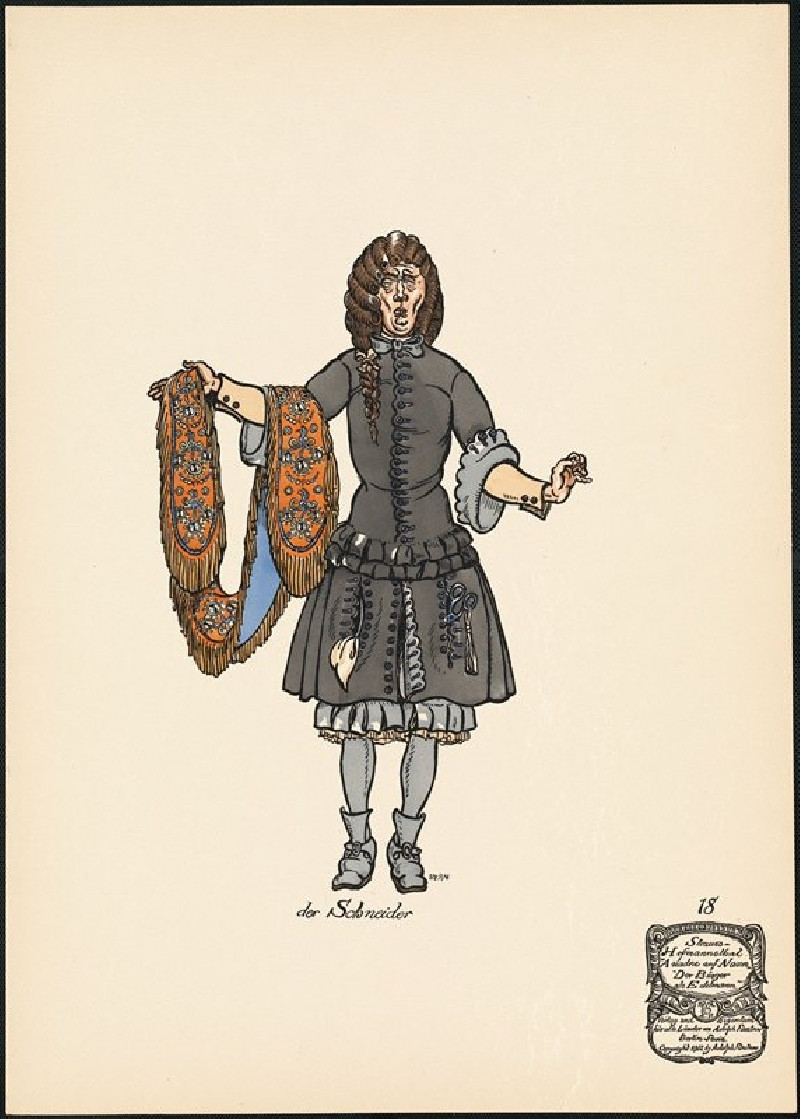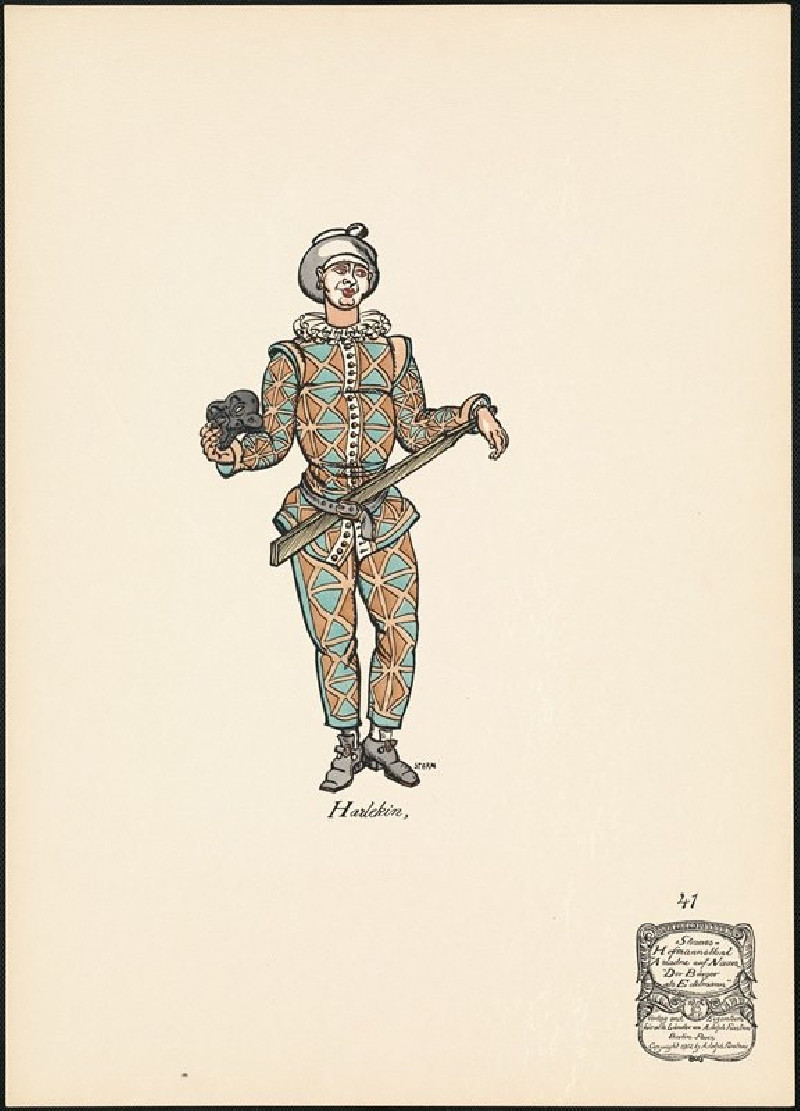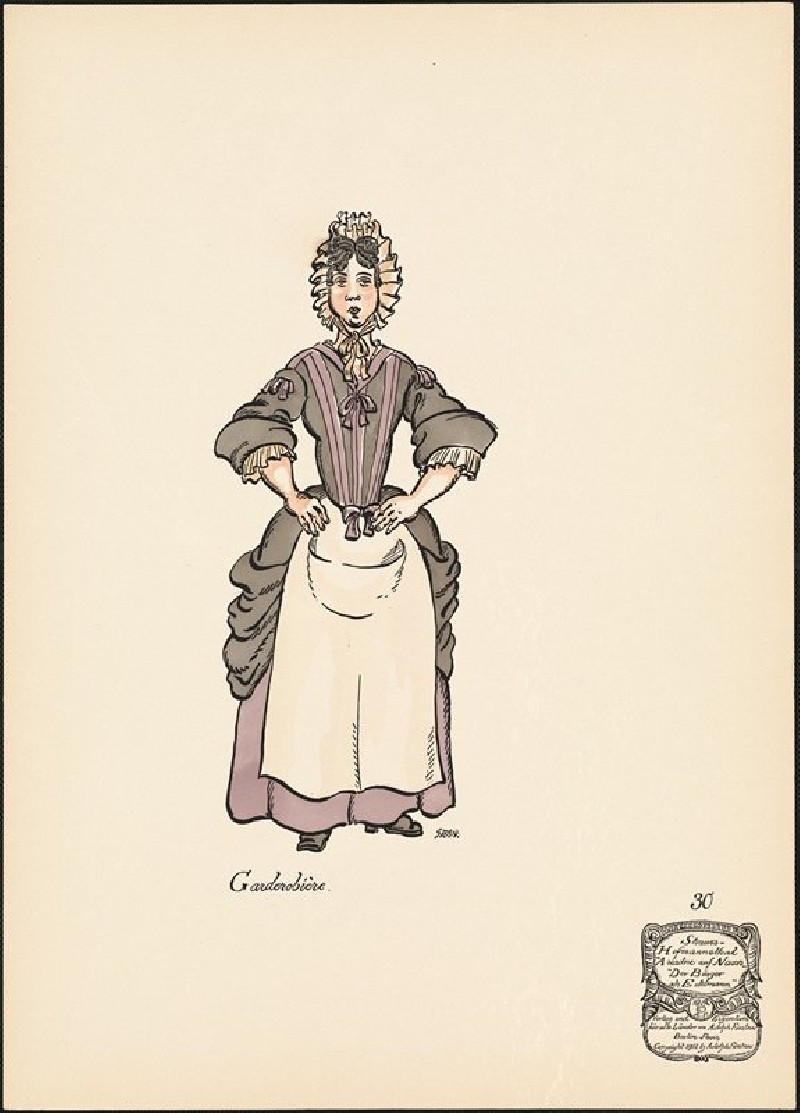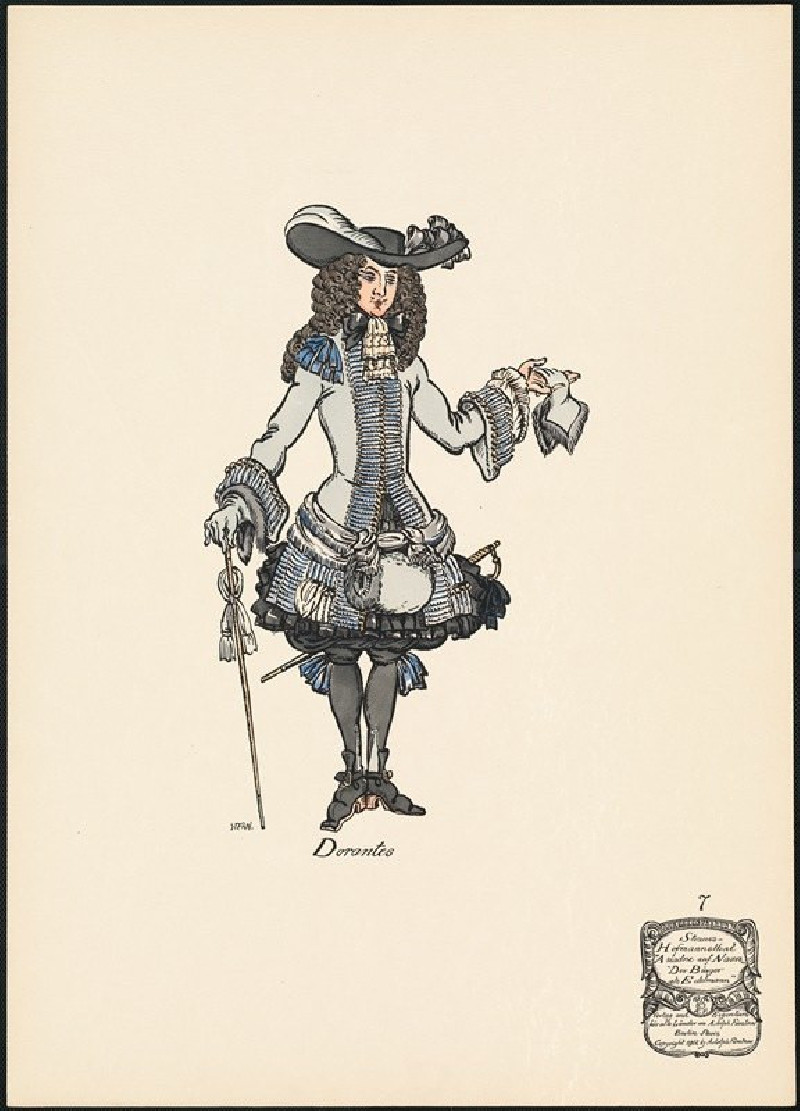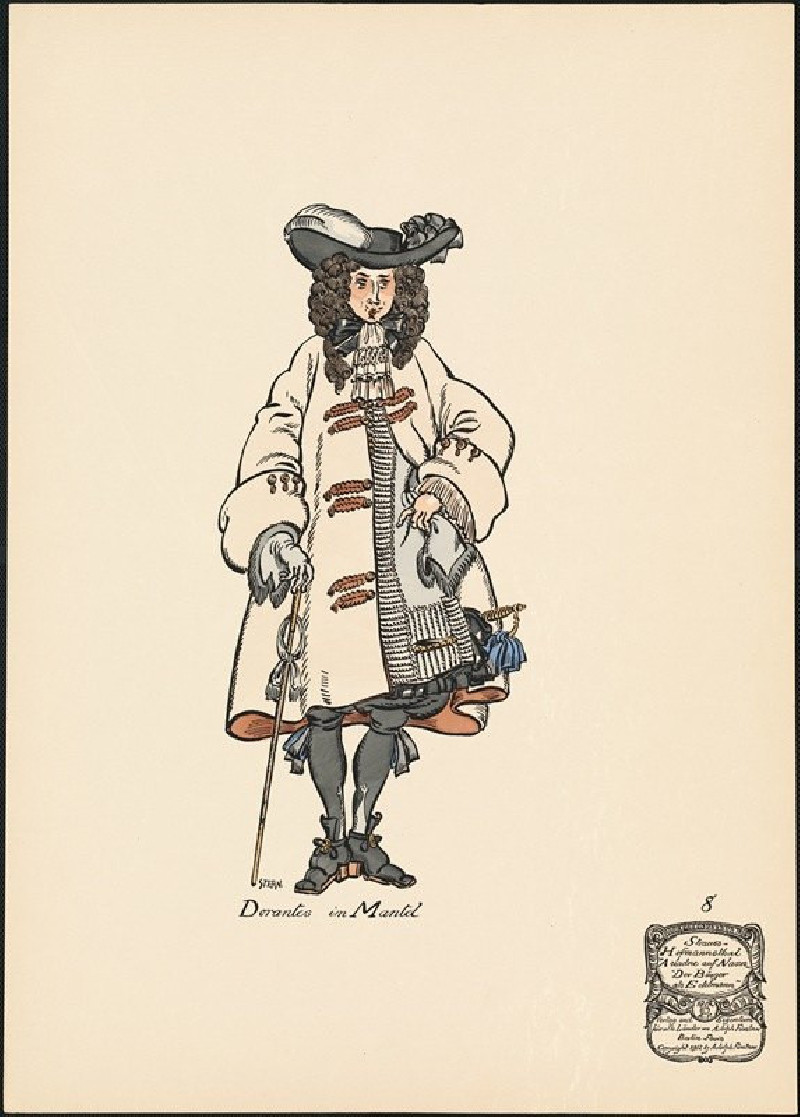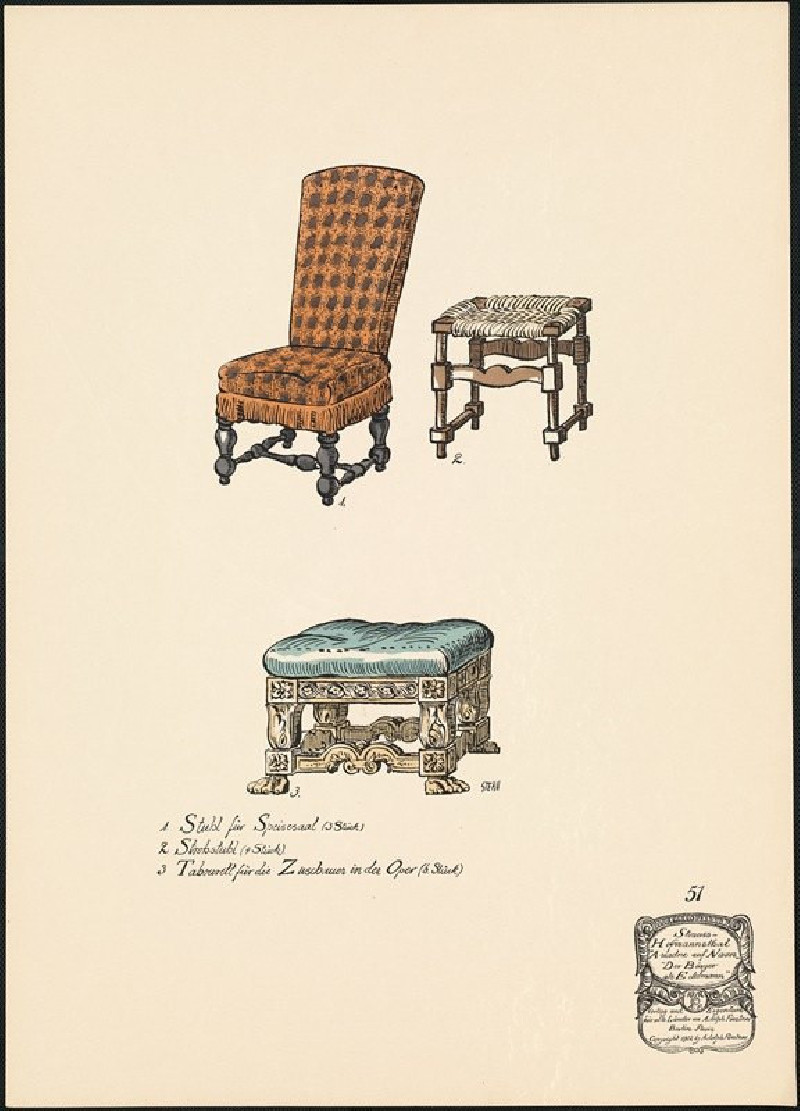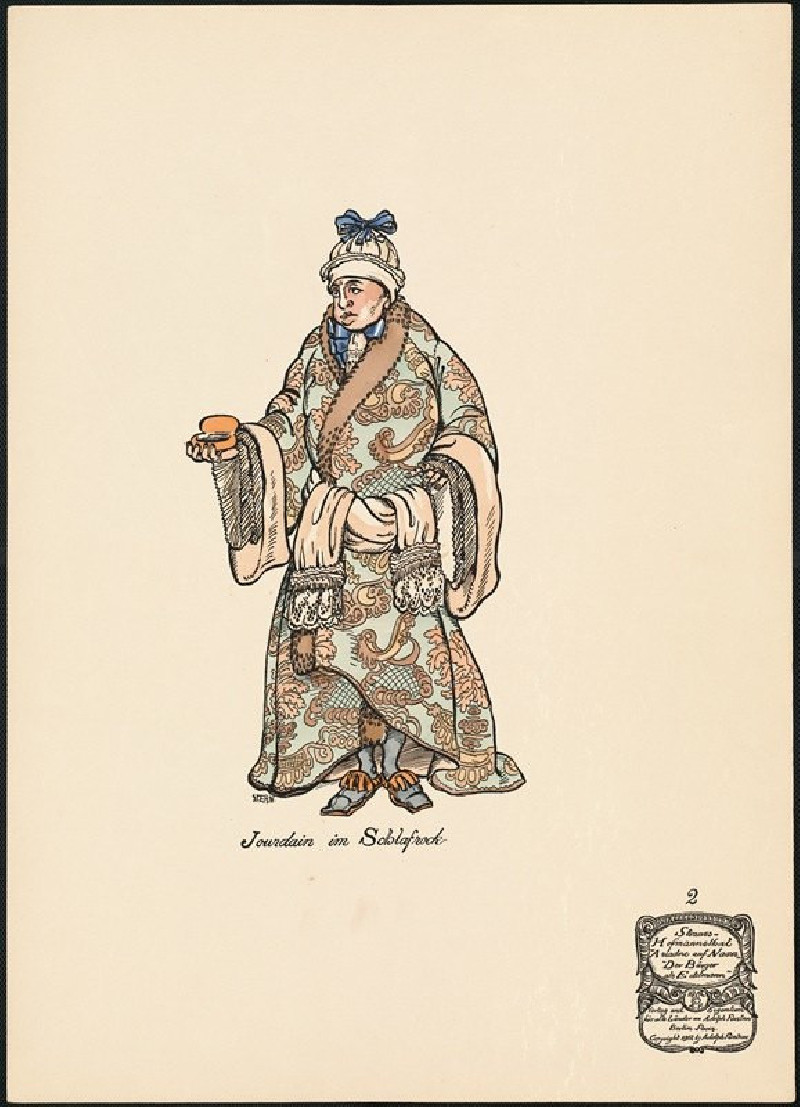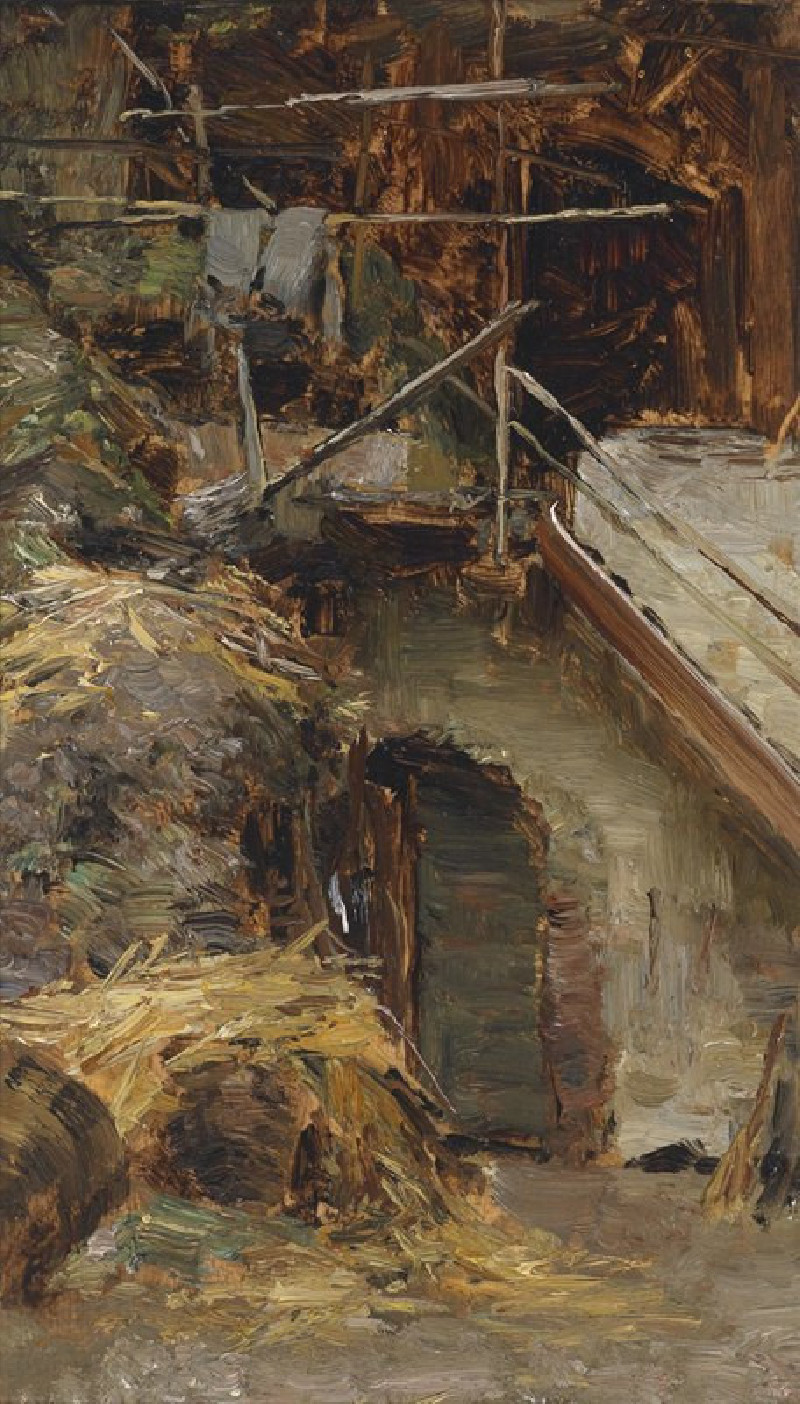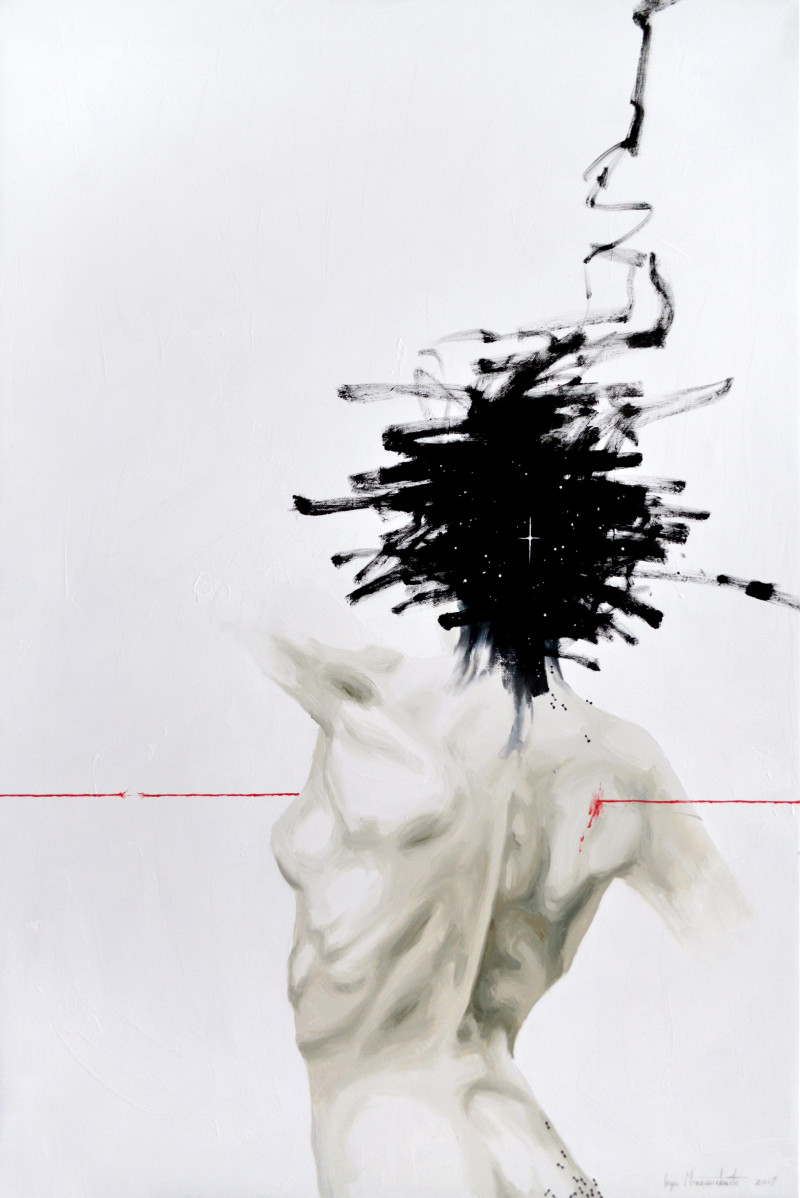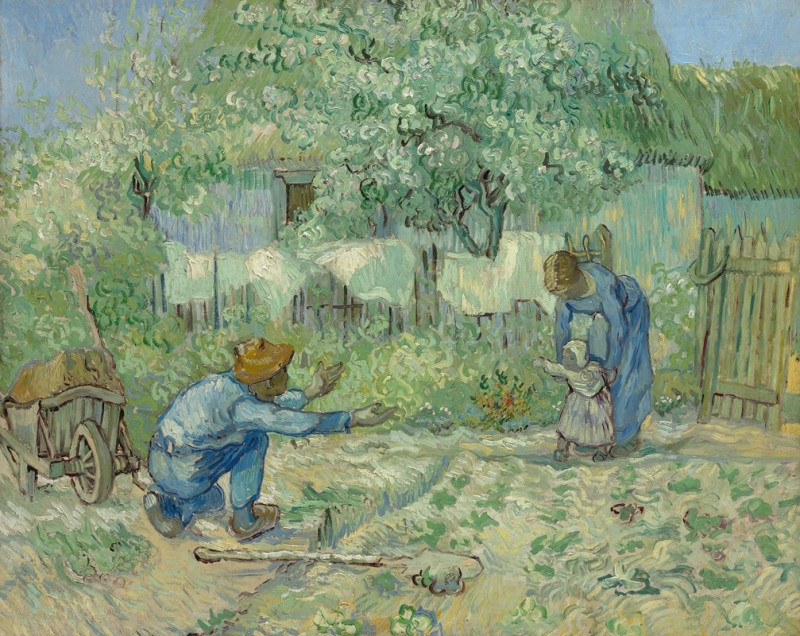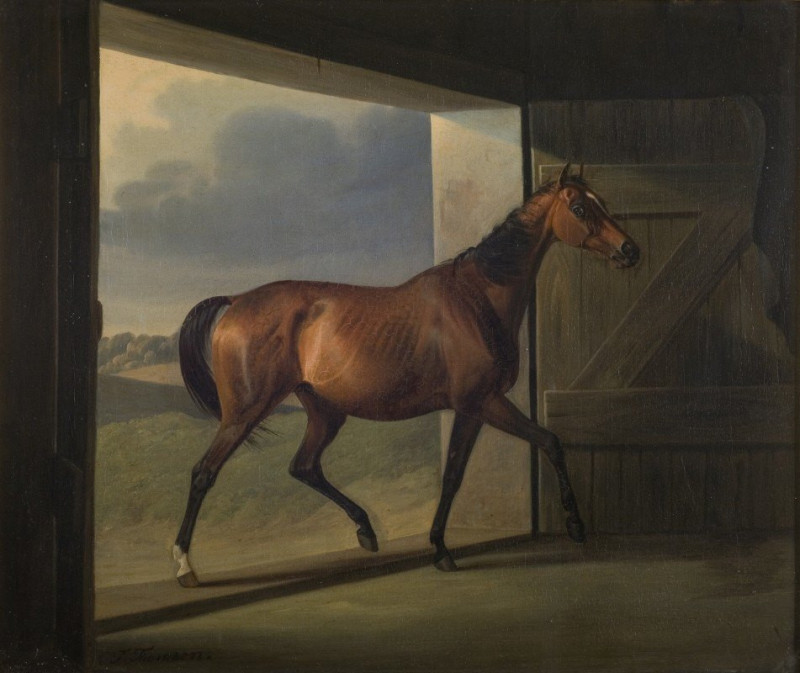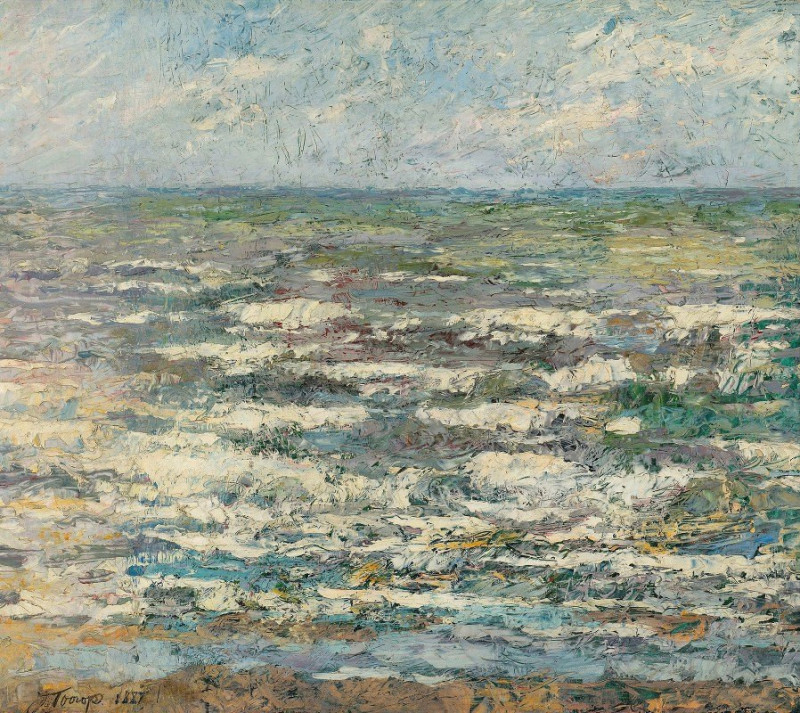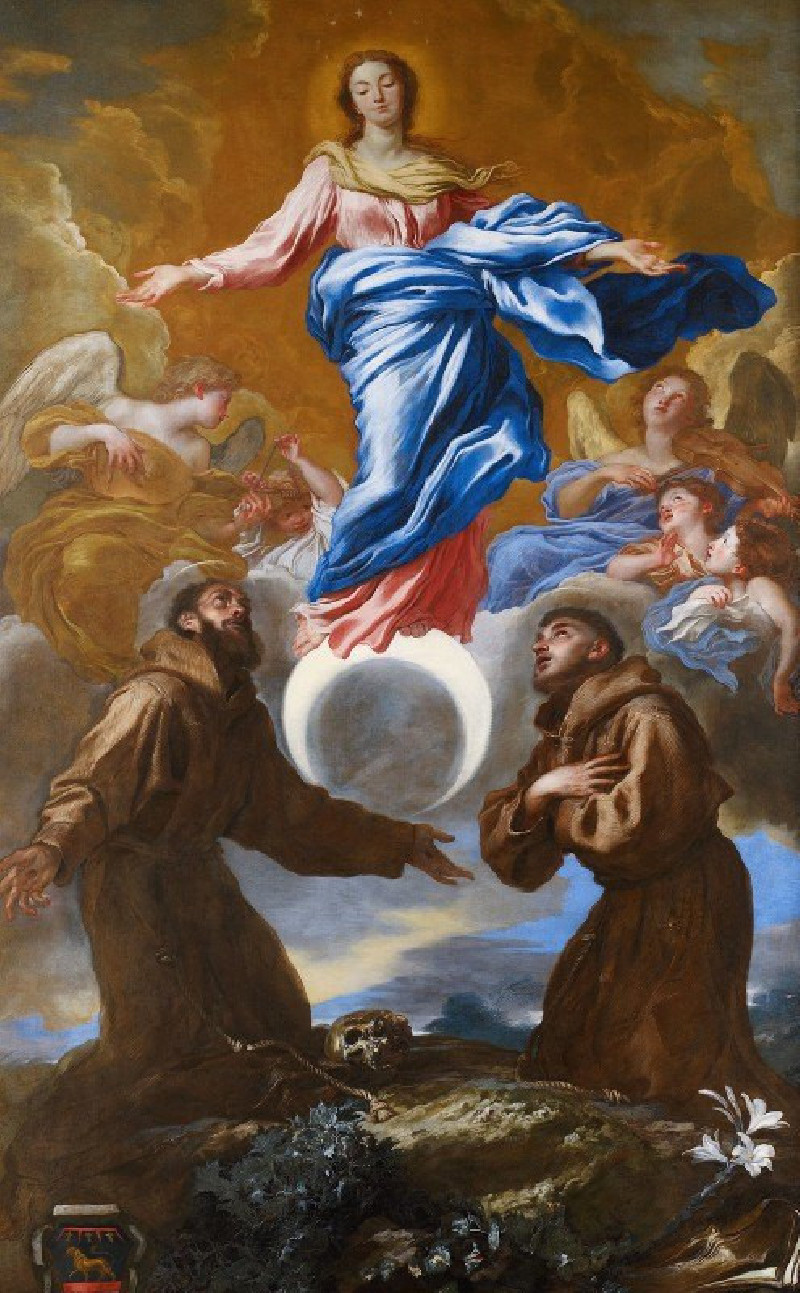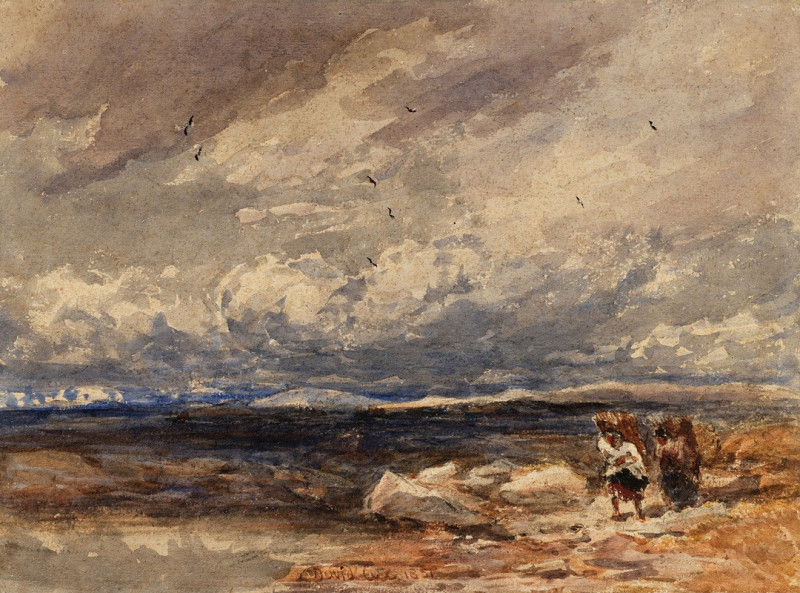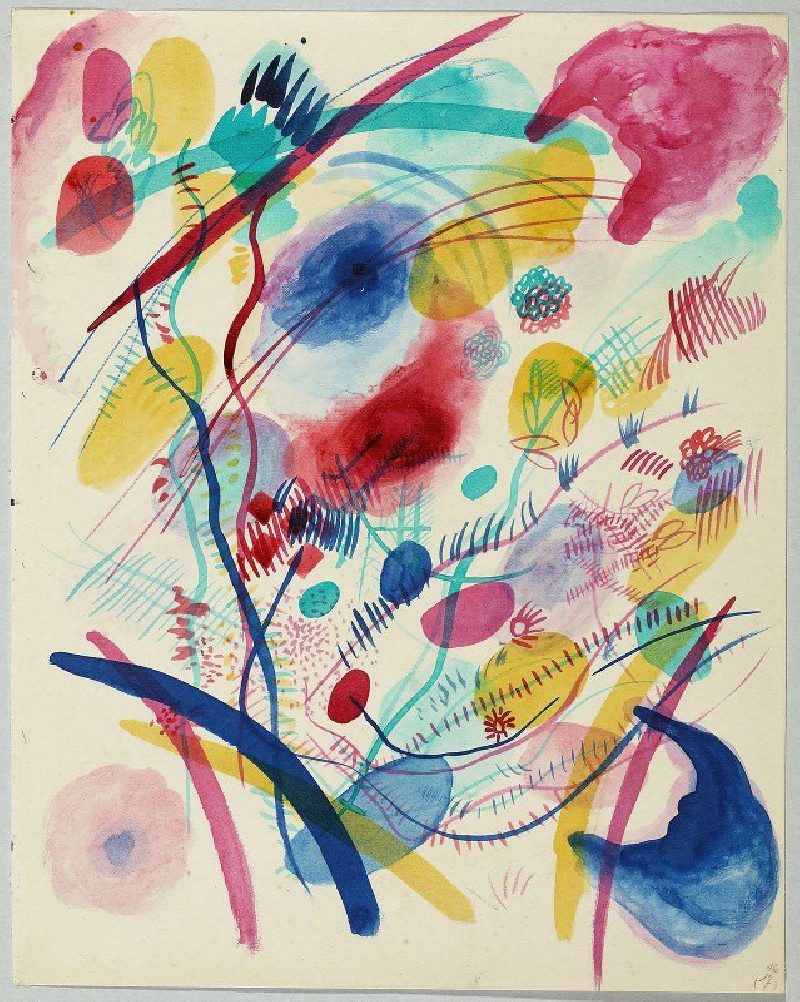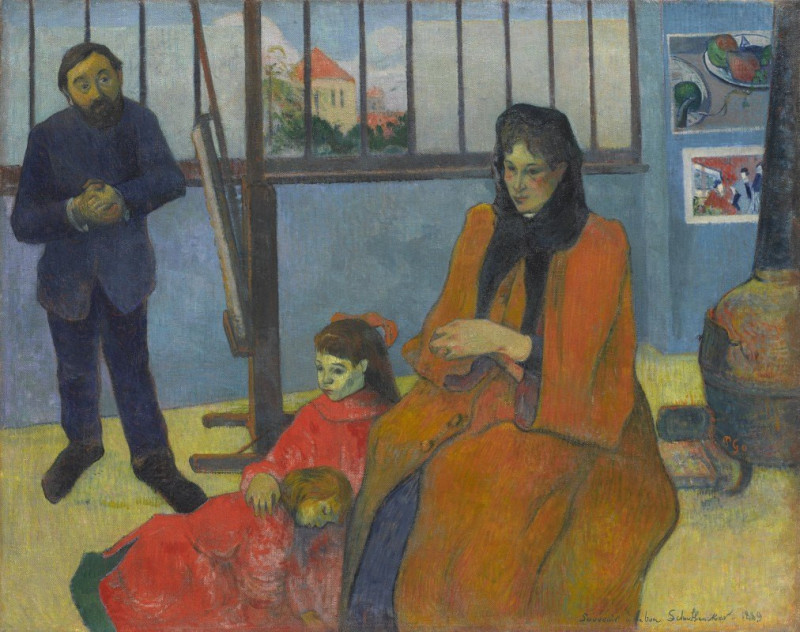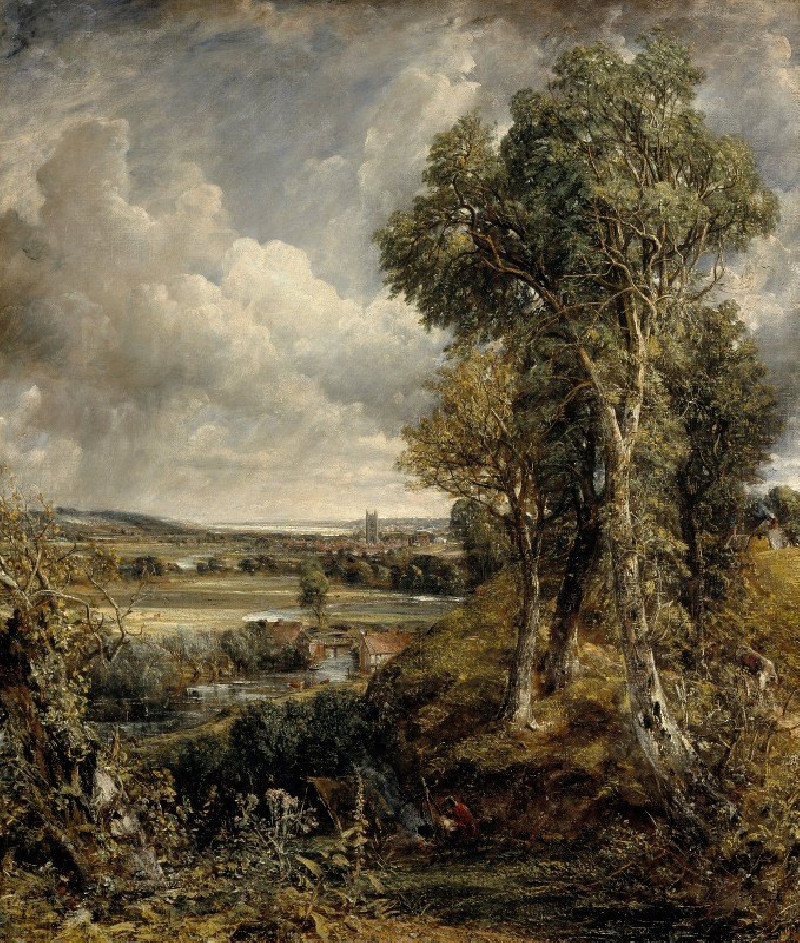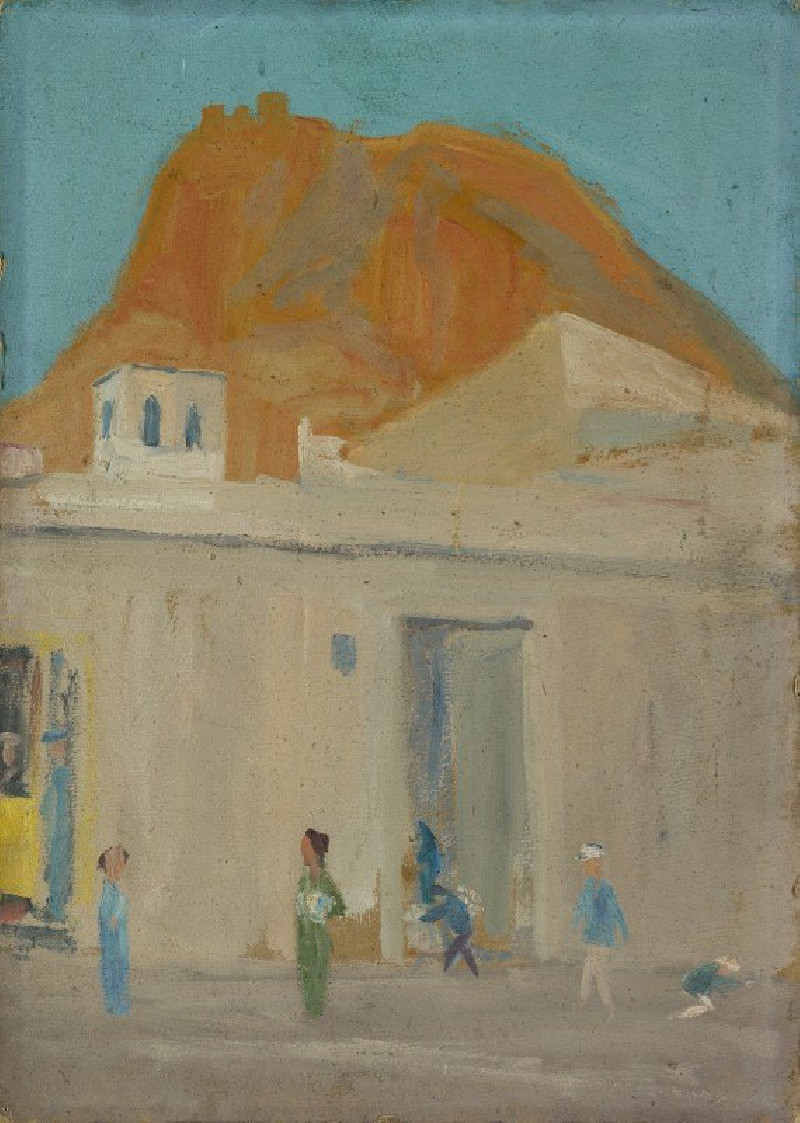Brighella (1912)
Technique: Giclée quality print
Recommended by our customers
More about this artwork
Ernst Stern's 1912 painting "Brighella" captures the captivating persona of one of the classic characters from the Commedia dell’arte, an early form of professional theatre that originated in Italy. In this vibrant depiction, Brighella is portrayed in his traditional garb, characterized by a colorful and flamboyant costume. Here, he wears a patterned, predominantly orange and green outfit with stripes and diamond shapes, complemented by a wide-brimmed hat adorned with a feather.Brighella, known for being a cunning and multifaceted character, often plays roles ranging from a crafty servant to a mischievous plotter. Stern’s illustration beautifully captures the essence of Brighella’s character with a lively and dynamic pose, suggesting movement and a playful intrigue. His expressiveness is further enhanced by his gestures, as he appears to be caught in a moment of conversation or performance.This artwork not only represents a figure from a significant cultural tradition but also showcases Stern's skill in employing bold lines and clear, bright colors to convey a vivid and enduring image.

